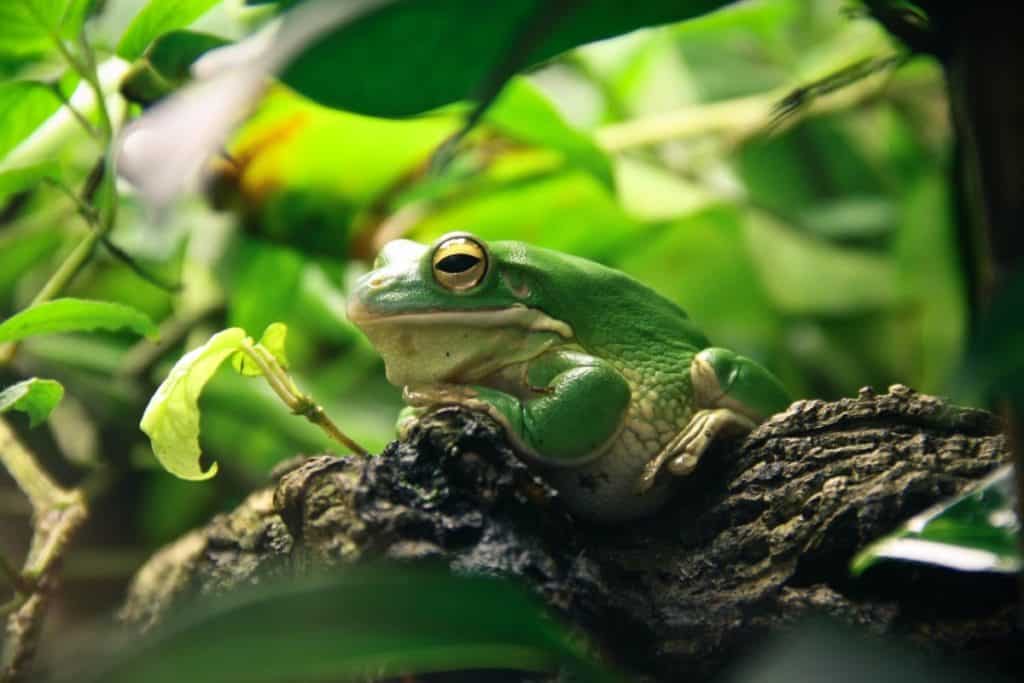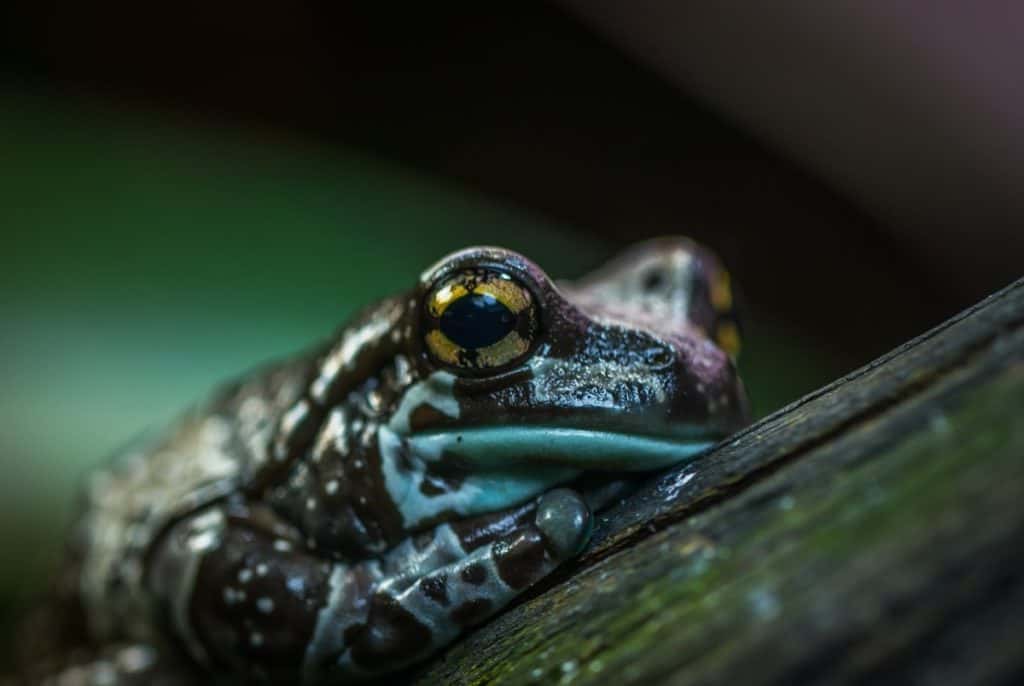
So, you were interested just like me if frogs are either producers or consumers. You’ve come to the right article then as you’ll find the answer to this question right here. Also, once you know the answer to the main question you should make sure that you keep on reading this article till the end as I’ll also answer a few more closely related questions.
Is a frog a producer or a consumer? Producers are organisms that can produce their foods like, for example, plants and algae. Consumers can’t produce their foods and need other organisms to provide food for them. So, frogs aren’t producers but they are consumers.
All animals that live on this earth are identified as consumers because they are all unable to produce their foods and either rely on other animals to survive or they rely on producers like plants or algae.
Why is a frog a consumer?
A frog is a consumer because a frog relies on other animals to survive like various insect species or when they’re still young they’re omnivores that rely on producers like plants and small insects to survive. They are not classified as producers because they cannot produce food for themselves.
So, as you can read above frogs are mostly carnivorous when they’re adults but there are also frog species out there that are omnivores. A lot of frog species also start as omnivores and once they grow larger they’ll tap into becoming carnivores.
What kind of consumers are frogs?
As we know by now, there are various kinds of frog species out there that are either carnivorous or omnivorous. Therefore frogs can be added to two different classes of consumers which are the secondary consumers and the tertiary consumers.
The secondary consumers are all the animals that feed on the primary consumers. The primary consumers are, for example, flies, grasshoppers, caterpillars, and termites. The tertiary consumers are all the animals that feed on the secondary consumers which are, for example, various species of fish, dragonfly larva, and rats.
Why are frogs, tertiary consumers?
Certain species of frogs can be classified as tertiary consumers because these frog species eat secondary consumers. Examples of secondary consumers that some frog species will eat are little mice and various small fish species.
As you can tell already, some tertiary consumers will eat frogs, and therefore frogs can also be classified as secondary consumers. Snakes, for example, will not pass it if they get the chance to eat a frog as a meal.

Why are frogs, secondary consumers?
Frogs can be identified as secondary consumers because they love to eat primary consumers. Examples of primary consumers that frogs love to eat are sawflies, leaf beetles, leafhoppers, plant bugs, and treehoppers.
And there are so many more primary consumers that frogs love to eat that it would be too much to all name them in this article but with the above-mentioned insects, you at least have an idea of which primary consumers they would love to eat every day.
If you can’t get enough of learning about frogs then I encourage you to check out the “Frogs Category Page” which consists of various articles that give answers to frog-related questions.
Why are frogs not primary consumers?
Frogs are throughout their lives not seen as herbivorous animals which are animals that belong to the primary consumer category. They are, however, carnivores or omnivores which can be put in the categories secondary consumers or tertiary consumers.
Another way of looking at it is by checking if the animal in question only feeds on producers (like, for example, plants) because then you’ll be able to easily put the animal in the primary consumer category.
Why are frogs not quaternary consumers?
Quaternary consumers are all the animals that love to eat the tertiary consumers. Frogs are not identified as quaternary consumers because frogs do not eat animals that belong to the tertiary consumers.
Examples of animals that are quaternary consumers are wolves, bears, hawks, lions, sharks, raccoons, and of course humans as even we eat, for example, frogs at times.
Why is a frog not a producer?
Producers are organisms that can produce their foods like, for example, plants and algae. Consumers like frogs cannot do this and therefore frogs cannot be classified as producers. Although frogs are not producers, you can be sure that smaller frogs love to eat certain producers.
Various examples of producers are any kind of green plants, fruits, small shrubs, algae, phytoplankton, various kinds of trees like the mighty oak, flowers, and weeds.
Is a frog a decomposer?
Decomposers are organisms that can break down decaying organisms or other dead organisms. This process is also referred to as decomposition. There are only a few living organisms that can do this like fungi. Frogs cannot decompose dead or decaying organisms and therefore they aren’t decomposers.
Other examples of organisms that are decomposers are various species of worms, termites, millipedes, bacteria, snails, beetles, mushrooms, and flies.

Related questions
What is a frog in the food chain?
Frogs are both prey and predators in the food chain. Many animals are tertiary consumers that like to eat frogs and many quaternary consumers would love to eat frogs as well. Frogs themselves mainly eat both primary consumers and secondary consumers to survive.
Check out the video below if you want to learn more about how the food chain in this world works.
Is a frog a carnivore, herbivore, or omnivore?
Various frog species exist but frogs can mainly be seen as either omnivores or carnivores. When frogs are still froglets they often survive by eating plant-based foods and tiny insects. Once they grow larger they’ll mostly become more carnivorous.
What are examples of other animals that are secondary consumers?
The list is almost endless when it comes to the various animals that are secondary consumers. Here I’ve written at least a few of them down to give you a good idea of which animals are secondary consumers, which are mice, dogs, cats, birds, foxes, owls, snakes, lizards, and fish.
Conclusion
Now you know that frogs can only be identified as consumers because they are unable to produce their food as plants can. They survive because they either live from eating plant-based foods and meat-based foods or they survive because they only live from meat-based foods. Frogs can also be identified as both secondary consumers and tertiary consumers as they eat both primary consumers and secondary consumers.

